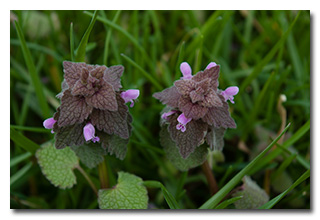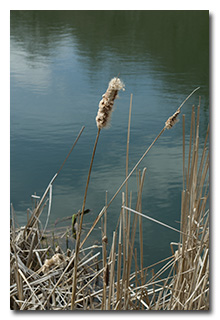
by William Eric McFadden
From the forest's website:
-
The Ohio Department of Natural Resources Division of Forestry welcomes you to the heart of Ohio's hill country. Gifford State Forest is the smallest of Ohio's state forests, at 320 acres, but offers some very pleasant hunting and hiking opportunities in the scenic northern edge of Athens County.
This forest was donated to the state in 1959 by William Gifford Selby for experimentation and research. It was named for his mother Virginia Gifford and her family. Today, Gifford State Forest is managed by the Ohio Division of Forestry.
Pictures
Description
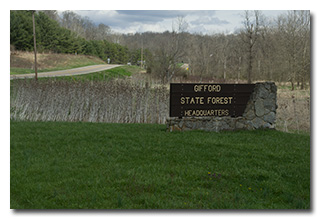 On Friday, April 8, 2022, one member of the Southeast Ohio Radio Adventure Team
performed a successful activation of Gifford State Forest in Ohio as part of the Parks on the
Air (POTA; link) program.
On Friday, April 8, 2022, one member of the Southeast Ohio Radio Adventure Team
performed a successful activation of Gifford State Forest in Ohio as part of the Parks on the
Air (POTA; link) program.
Following a successful activation of Muskingum River State Park (link) and a successful "two-fer" activation of Blue Rocks State Park and Blue Rocks State Forest (link), Eric McFadden, WD8RIF, visited Gifford State Forest for his fifth activation of this unit. Eric was accompanied by his little dog, Theo.
Eric arrived at Gifford State Forest at about 1750 UTC. Under gray skies and a light rain, while Theo explored, Eric deployed his 28½' wire vertical on a Jackite 31' telescoping fiberglass mast and drive-on mount and, because of the precipitation, he set up his KX3 inside the car. Eric was on the air at 1803 UTC.
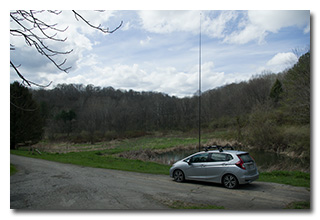 As at all of his previous visits to Gifford State Forest, Eric had absolutely no cell-signal during this visit. Having anticipated
this, he had announced his planned activation on the POTA website in the hope that POTA Spots would automatically
spot him when he appeared on Reverse Beacon Network (RBN, link) and
had also asked his friends K8RAT and K4SWL to watch the Reverse Beacon Network (RBN) for him.
As at all of his previous visits to Gifford State Forest, Eric had absolutely no cell-signal during this visit. Having anticipated
this, he had announced his planned activation on the POTA website in the hope that POTA Spots would automatically
spot him when he appeared on Reverse Beacon Network (RBN, link) and
had also asked his friends K8RAT and K4SWL to watch the Reverse Beacon Network (RBN) for him.
Eric began operations on 40m by finding a frequency to run and calling "CQ POTA". It quickly became apparent to Eric that he wasn't being spotted to POTA Spots, either automatically based on his announcement and the RBN or by his friend K8RAT and K4SWL, because his calls were going unanswered. (Eric later learned from K8RAT that few or no RBN-spots were being picked up by POTA Spots on this day, and that his attempts to spot Eric to POTA Spots had repeatedly failed.)
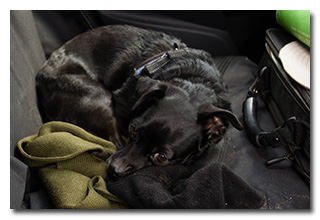 Eric's first QSO finally came at 1815 UTC with KC2JED operating mobile in New York; KC2JED isn't a POTA hunter and, because
he was operating mobile, probably hadn't been watching POTA Spots. Eric's second QSO came at 1818 UTC with N8RVE in Ohio. N8RVE
is a POTA hunter, and he promised to spot Eric to POTA Spots; he must have been successful because at 1823 UTC, Eric's run
finally started, with a QSO from WB2FUE in Pennsylvania. Thereafter, QSOs then came quickly, with Eric's thirteenth QSO coming
at 1833 UTC with K4CAE in South Carolina. This run included QSOs with stations in New York, Ohio (4), Pennsylvania (3),
Michigan (2), Minnesota, Illinois, and South Carolina.
Eric's first QSO finally came at 1815 UTC with KC2JED operating mobile in New York; KC2JED isn't a POTA hunter and, because
he was operating mobile, probably hadn't been watching POTA Spots. Eric's second QSO came at 1818 UTC with N8RVE in Ohio. N8RVE
is a POTA hunter, and he promised to spot Eric to POTA Spots; he must have been successful because at 1823 UTC, Eric's run
finally started, with a QSO from WB2FUE in Pennsylvania. Thereafter, QSOs then came quickly, with Eric's thirteenth QSO coming
at 1833 UTC with K4CAE in South Carolina. This run included QSOs with stations in New York, Ohio (4), Pennsylvania (3),
Michigan (2), Minnesota, Illinois, and South Carolina.
Being interested to see if POTA Spots would follow him to a different frequency, Eric switched to 30m and began calling CQ. It seems POTA Spots did automatically update Eric's spot, or perhaps K8RAT succeeded in updating Eric's spot. Eric's first QSO on 30m came at 1838 UTC with WB4AEG in Georgia. QSOs came steadily, with Eric's eighth QSO on 30m coming at 1851 UTC with VE3DQN in Ontario. This run included a P2P QSO with AF8E who was activating Wayne National Forest (K-4521) in Ohio and QSOs with operators in Georgia, Florida, New Hampshire, Louisiana, Tennessee, Ohio, Rhode Island, and Ontario.
Still being interested to see if POTA Spots would follow him, Eric switched to 20m and began calling "CQ". Eric's first and only QSO on 20m came at 1856 UTC with KI5AL in Texas. Several more minutes of calling "CQ" failed to produce any additional QSOs and Eric decided to call it quits. Conveniently, the gray skies and rain that had been present during set-up had completely disappeared and tear-down took place under blue skies and puffy white clouds.
In all, Eric made twenty-two QSOs, including one P2P QSO, in about fifty-three minutes. All of Eric's QSOs were CW and were made with five watts output.
Eric also submitted his log to the World Wide Flora and Fauna in Amateur Radio (WWFF; link) program for KFF-4992.
(return)
